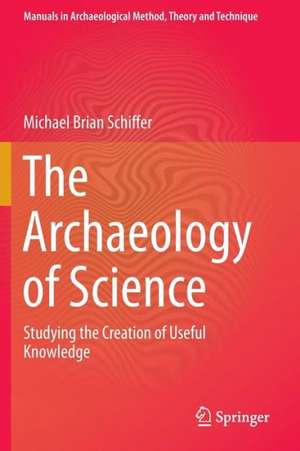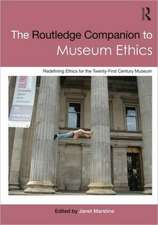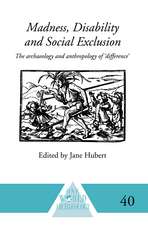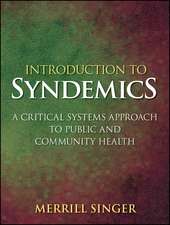The Archaeology of Science: Studying the Creation of Useful Knowledge: Manuals in Archaeological Method, Theory and Technique
Autor Michael Brian Schifferen Limba Engleză Paperback – 26 sep 2014
| Toate formatele și edițiile | Preț | Express |
|---|---|---|
| Paperback (2) | 383.93 lei 43-57 zile | |
| Springer International Publishing – 20 iun 2015 | 383.93 lei 43-57 zile | |
| Springer International Publishing – 26 sep 2014 | 417.14 lei 43-57 zile | |
| Hardback (1) | 389.70 lei 43-57 zile | |
| Springer International Publishing – 29 mai 2013 | 389.70 lei 43-57 zile |
Preț: 417.14 lei
Nou
Puncte Express: 626
Preț estimativ în valută:
79.84€ • 86.76$ • 67.11£
79.84€ • 86.76$ • 67.11£
Carte tipărită la comandă
Livrare economică 21 aprilie-05 mai
Preluare comenzi: 021 569.72.76
Specificații
ISBN-13: 9783319118680
ISBN-10: 3319118684
Pagini: 220
Ilustrații: XVI, 204 p. 25 illus., 1 illus. in color.
Dimensiuni: 155 x 235 x 17 mm
Greutate: 0.32 kg
Ediția:2013
Editura: Springer International Publishing
Colecția Springer
Seria Manuals in Archaeological Method, Theory and Technique
Locul publicării:Cham, Switzerland
ISBN-10: 3319118684
Pagini: 220
Ilustrații: XVI, 204 p. 25 illus., 1 illus. in color.
Dimensiuni: 155 x 235 x 17 mm
Greutate: 0.32 kg
Ediția:2013
Editura: Springer International Publishing
Colecția Springer
Seria Manuals in Archaeological Method, Theory and Technique
Locul publicării:Cham, Switzerland
Public țintă
GraduateCuprins
PART I.- 1 Introduction.-2 Science: A Behavioral Perspective.- 3 The Varieties of Scientific Knowledge.-PART II.- 4 Experimental Archaeology.- 5 Ethnoarchaeology.- 6 Archaeometry.- PART III .- 7 The Artifacts of Modern and Early Modern Science.- 8 Thomas Edison’s Science.- 9 Colonization and Exploration.- 10 Scientific Expeditions to Antarctica.-11 The U.S. Nuclear Establishment.-12 Archaeology of the Space Age.- 13 Discovery Processes.
Recenzii
"A Renaissance man in the best sense of the phrase, the author long ago ventured forth with such archaeological expertise into inter-disciplinary waters...this book attempts to systematize and stake out an archaeological approach to science studies by characterizing scientific activity in behavioral terms" (Tim Webmoor, Archaeolog Blog, 2014)
Notă biografică
Michael Brian Schiffer is the Fred A. Riecker Distinguished Professor in the School of Anthropology at the University of Arizona. During his long professional career, now approaching four decades, he has conducted many and varied studies that have contributed to the approach, construction, and content of this manual. In 1983 he initiated a program of experimental archaeology at the University of Arizona, have published many experiments on ceramic technology, and for nearly 30 years taught a course on experimental archaeology. He has contributed to the theory and method of ethnoarchaeology and supervised several important ethnoarchaeological dissertations. He was also a pioneer in the study of modern material culture. The philosophy of archaeology has also been one of his interests, which has led to a better understanding of the kinds of knowledge that science produces and their relationships to archaeological research. He has published an artifact-based theory of human communication, engaged the recent history of American archaeology, and published copiously on diverse topics of archaeological method and theory. In addition, he has done extensive research on the history of electrical and electronic science and technology, culminating in four books. And he has written a book about the study of technological change in which the role of scientific knowledge looms large; indeed, some of the ideas in that book have loud echoes in the manual. In short, because of his varied interests and eagerness to delve into new subject areas, he is well situated to pull off this manual.
Textul de pe ultima copertă
This manual pulls together—and illustrates with interesting case studies—the variety of specialized and generalized archaeological research strategies that yield new insights into science. Throughout the book there are templates, consisting of questions, to help readers visualize and design their own projects. The manual seeks to be as general as possible, applicable to any society, and so science is defined as the creation of useful knowledge—the kinds of knowledge that enable people to make predictions. The chapters in Part I discuss the scope of the archaeology of science and furnish a conceptual foundation for the remainder of the book. Included are basic principles of behavioral archaeology that, because they privilege people-artifact interactions, can be employed to frame new research on science. The varieties of scientific knowledge—from observations to theories and everything in between—are defined in behavioral terms. Next, Part II presents several specialized, but widely practiced, research strategies that contribute to the archaeology of science. These chapters contain fascinating case studies from the archaeological literature that illustrate how these strategies can be employed to formulate and answer research questions.
In order to thoroughly ground the manual in real-life applications, Part III presents lengthy case studies that feature the use of historical and archaeological evidence in the study of scientific activities. Many of these chapters draw on unpublished archaeological reports that bring to light the material dimension of intriguing—sometimes once secret—science and technology projects, such as the Manhattan Project, Project Rover, and Thomas Edison’s “invention factories”, to name a few. The Archaeology of Science: Studying theCreation of Useful Knowledge stimulates readers because it calls attention to a great many archaeological projects already accomplished and shows readers how they can contribute to expanding and enriching the archaeology of science. This original concept provides both advanced undergraduates and graduates, as well as professional archaeologists, with a cornucopia of strategies and tactics for conducting original—indeed, exciting—research leading to term papers, theses, dissertations, and eventually publications.
In order to thoroughly ground the manual in real-life applications, Part III presents lengthy case studies that feature the use of historical and archaeological evidence in the study of scientific activities. Many of these chapters draw on unpublished archaeological reports that bring to light the material dimension of intriguing—sometimes once secret—science and technology projects, such as the Manhattan Project, Project Rover, and Thomas Edison’s “invention factories”, to name a few. The Archaeology of Science: Studying theCreation of Useful Knowledge stimulates readers because it calls attention to a great many archaeological projects already accomplished and shows readers how they can contribute to expanding and enriching the archaeology of science. This original concept provides both advanced undergraduates and graduates, as well as professional archaeologists, with a cornucopia of strategies and tactics for conducting original—indeed, exciting—research leading to term papers, theses, dissertations, and eventually publications.
Caracteristici
Pulls together various archaeological research strategies that yield new insights into science Contains templates, consisting of questions, to help readers visualize and design their own projects New insights are offered into the relationship of science and technology





















